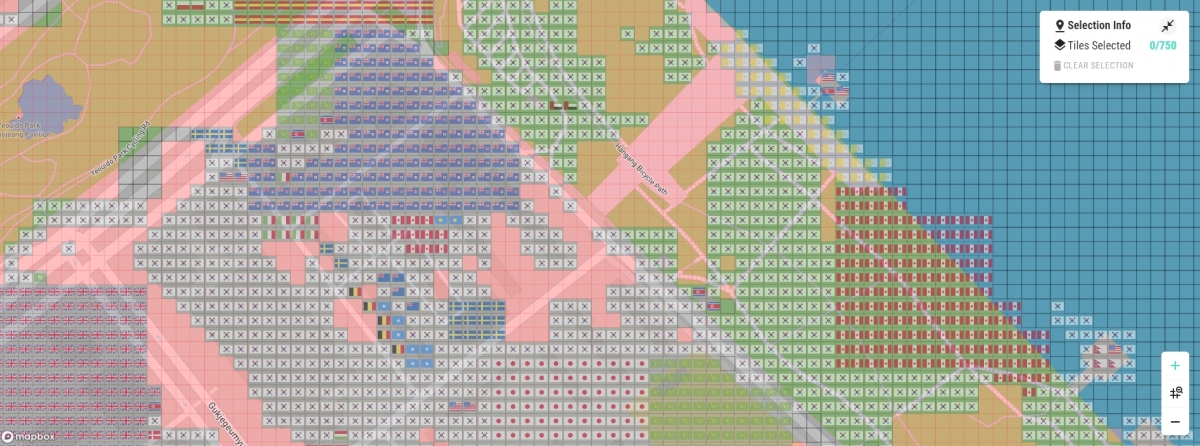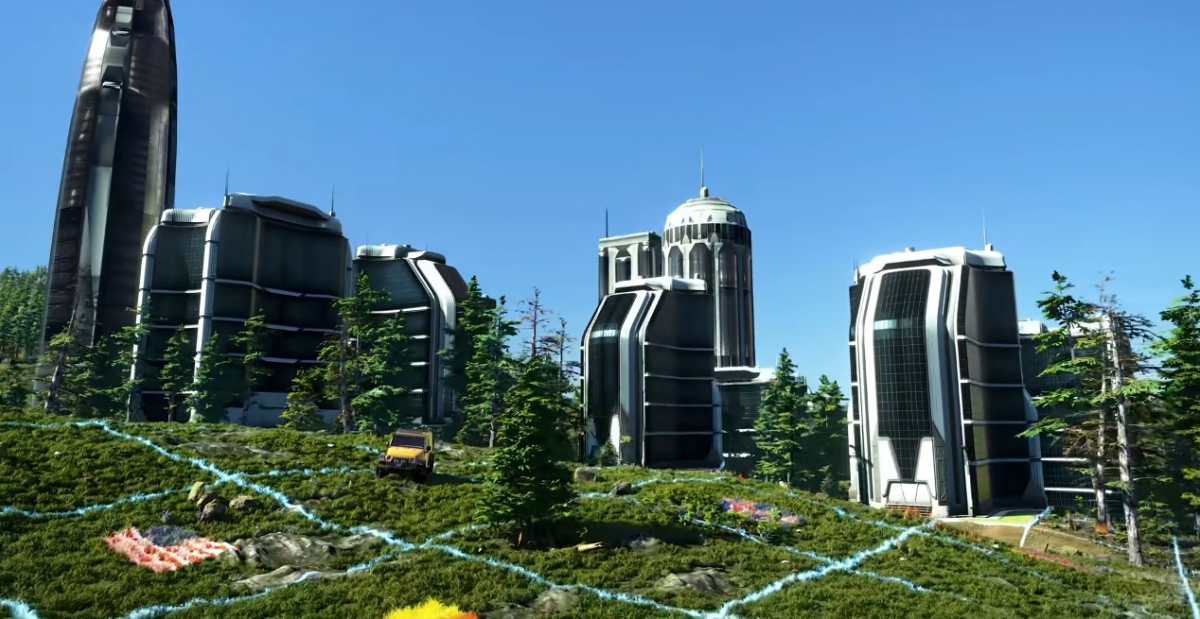What would you do if you could purchase the construction site for Hyundai Global Business Center (79,342㎡) located in Samseong-dong in Seoul for a little more than 12 million KRW? Obviously, it sounds like nonsense in the real world. But in the virtual real estate exchange ‘Earth 2’, it is a feasible story. Modeled the exact shape of the earth, Earth 2 is a digital environment and virtual real estate platform designed by Australian developer Shane Isaac in November 2020. Here, the currency ‘E$’ is used, and users can purchase up to 750 pieces of land (tile) divided into 10 × 10m. This means that the land that can be owned by each person is approximately 75,000㎡. Land that is popular in reality also shows a high commercial value on the digital earth. The area around the U.S. military base in Yongsan, which has been under development for many years, has already been purchased by users from various countries—not only Korea but also Japan, the U.K., Netherlands, and Germany.
As of July 14, the total asset value of land traded on Earth 2 is approximately 214.6 billion KRW. Among them, South Korea’s share is the second largest after the United States, and the amount is equivalent to 20.5 billion KRW. It exists in the virtual world – not in reality – but it is anticipated to create high value when that space is utilized. However, some say that investors are overly optimistic about this market. The earth replicated into the digital environment was divided into 5 trillion tiles, because the scarcity of those tiles – at the current moment – is the only factor that determines the fluctuations of land prices. It’s like cryptocurrencies, Bitcoin or Ethereum. Perhaps recognising such concerns, the operating company of Earth 2 released a video last April. The video shows the metaverse where resources can be collected and buildings can be built, which goes beyond purchasing and selling the ownership of the land. It seems to reflect the intention of the operating company to become a more influential platform while gradually establishing the industrial structure of the real world.
Although the trading volume of virtual real estate continues to rise, it is still a bit strange and unusual for many people to purchase and sell land that they cannot set foot on. Yet we have already experienced the emergence of similar services: the internet. Nowadays, it is natural for us to pay the domain fee to create a website, but in the early days of the internet, such a procedure was considered strange. By recalling the past, current users of Earth 2 are now acknowledging that the second version of the internet has arrived. Those who quickly adapt to the new environment may become clients who commission the design of virtual architectural buildings in the future. (written by Kim Yeram)







